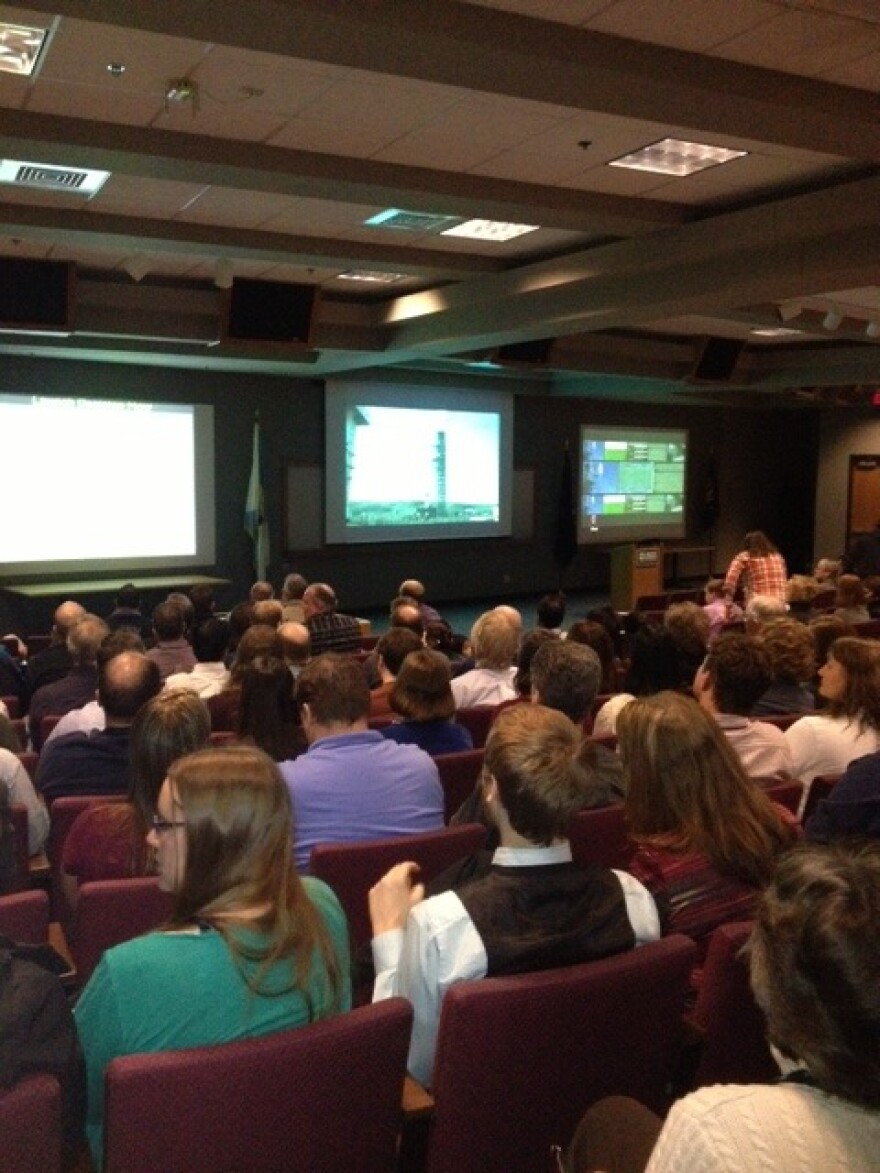Several hundred people gathered in a theater near Sioux Falls to watch and cheer a rocket blasts from a California Launchpad. The Landsat Data Continuity Mission or L-D-C-M is a joint project between NASA and EROS Data Center in South Dakota. The satellite aboard the rocket will provide digital imaging of the earth.
Just before noon central it was all systems go. As the engines roar to life just 15 seconds before launch the crowd in a theater at the EROS Data Center watch a large screen showing a live shot from Vandenberg Air Force Base in California.
Liftoff
“It was a classic launch, perfect weather,” says Tom Kalvelage, Chief of Data Management at EROS. “They switched over to internal spacecraft systems after a long precise countdown. The main engine turned on firing off its booster - lifted off away from the tower and into space after about four minutes just as programmed. It then shut off and then there was a great separation of the two stages. The fairing came off as well. All of those are things that can go wrong and the fact that they didn’t go wrong is a great positive development.”
There were several cameras positioned on the rocket to document the launch. The oohs and aahs from the crowd sounded more like watching fireworks on the fourth of July.
Sioux Falls Mayor Mike Heuther was one of the spectators. He says as mayor he values the work at EROS and sees the Landsat 8 as a project that continues long after he is in office. But for him personally, watching the launch took him back to his childhood.
“When I was a kid we always watched this stuff and we were always dreaming about the what ifs and I did a little bit of that today. (Did you ever want to be an astronaut?) No never no way – I like my feet on the earth and I certainly respect what these folks do and I see the value in it especially when it comes to things like climate change that is happening these pictures, these images that are occurring in our world. It’s just huge,” says Heuther.
There were several kids in the audience; children of scientists or elected officials. Alex Handshumaker is a third grader from Harrisburg. His dad is on the city council there. Alex sat in the front row closest to the launch screen.
“I saw like how they were like taking off and how they like did the broadcast,” says Alex.
Alex took a video of the launch and plans to take the video to school and share the event with his classmates. He wants to tell them about why EROS is involved.
“Because it has to have like the satellite and the communication,” says Alex.
But it’s more than launching a spacecraft into orbit. The Landsat data service began in 1972. It is the longest continuous record of changes to the earth. And the images are housed at EROS Data Center near Sioux Falls. The images are available to scientists around the world free of charge to see changes to the earth over time. The satellites provide images of the same location every 16 days.
“Our mission of contributing to the understanding a changing planet is going to be even more important and we’re going to have even more tools like we’ve never had before,” says Tom Holm, Chief of Policy and Communications at EROS.
Holm says with the launch of Landsat 8 it guarantees images for many more years.
“We’re not only going to get more data because it’s going to have the capability to down link more than we’ve ever had before,” says Holm. “The data is going to be better because of the advancements in the imaging technology. And we’re going to get new data because the user requirements asked for information in different portions of electromagnetic spectrum to help them see water sediment and that type of thing in what’s called a cirrus band so they can detect the thin clouds and then we can remove those clouds because we don’t like clouds – they get in the way.”
But the images from the new Landsat 8 won’t be immediate. It’ll take several months before regular data is received at EROS. Several calibrations and tests need to be made as well as a ceremonial handing over of the spacecraft operation from NASA to EROS.
“We’ll go through a very precise checklist to make sure that everything that needed to be delivered has been delivered and everything that’s in line for us – us being USGS and EROS to take over the operation of the spacecraft and they’ll basically turn the keys over to us here at EROS,” says EROS Director Frank Kelly.
Kelly says they will have another celebration in May or June.


